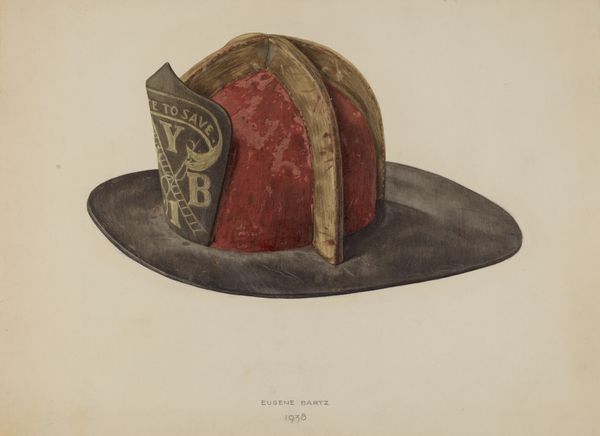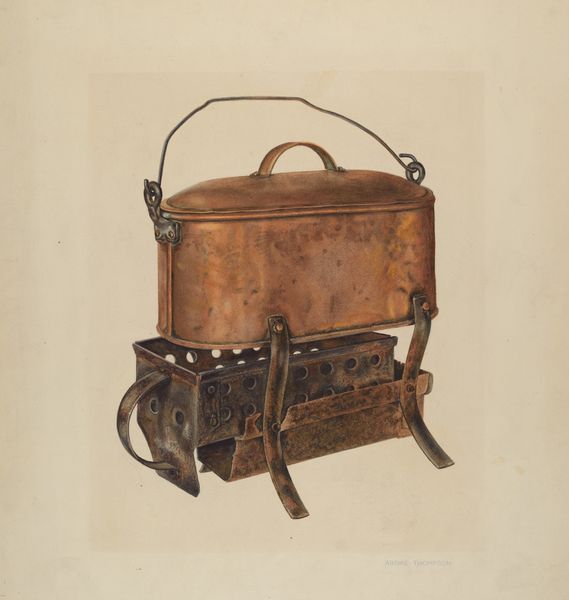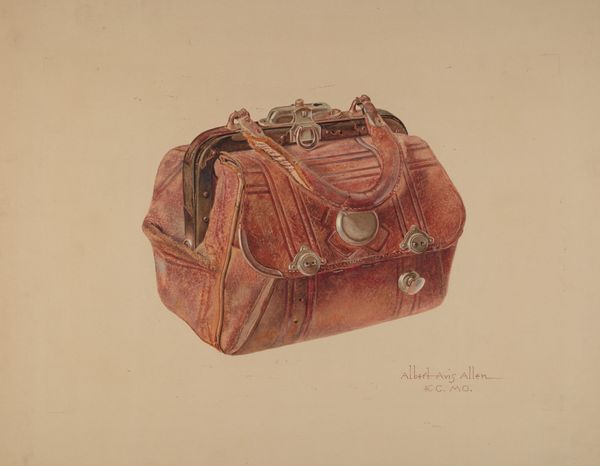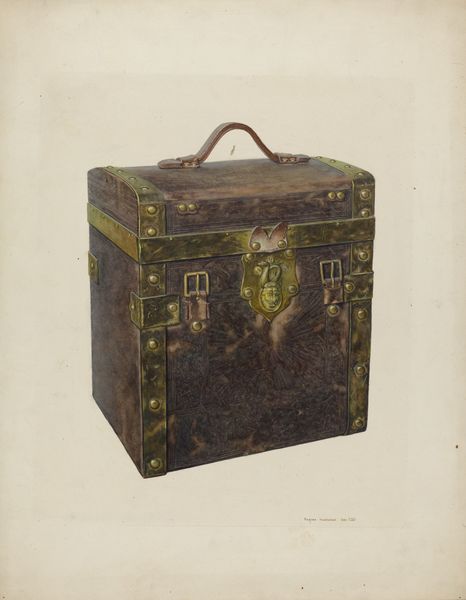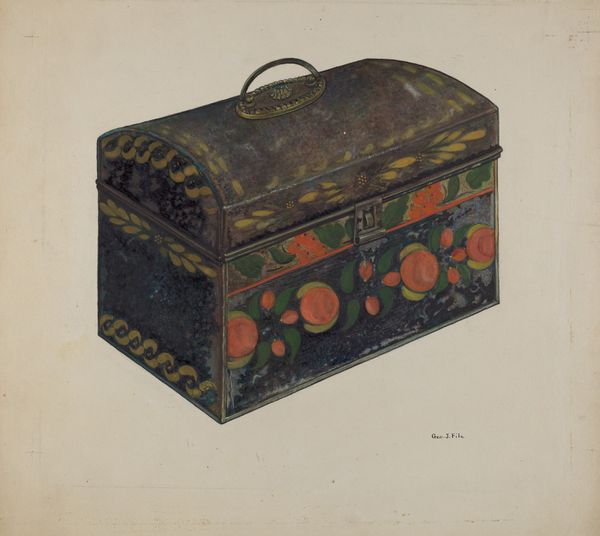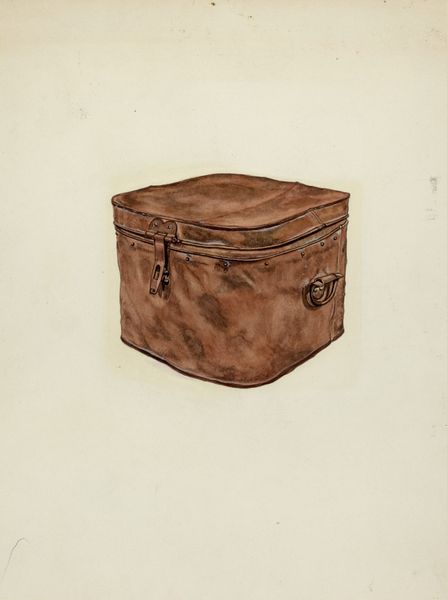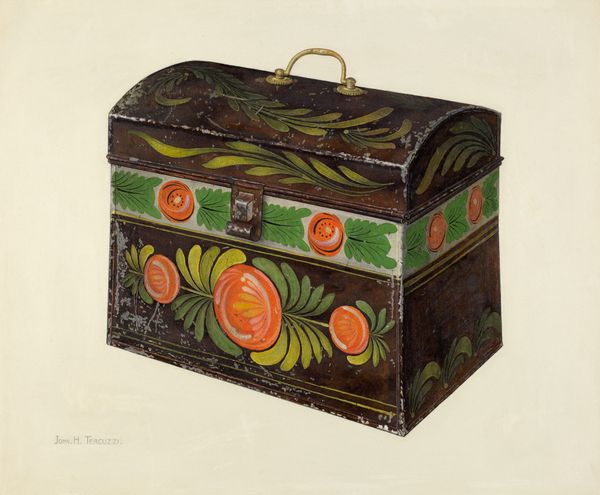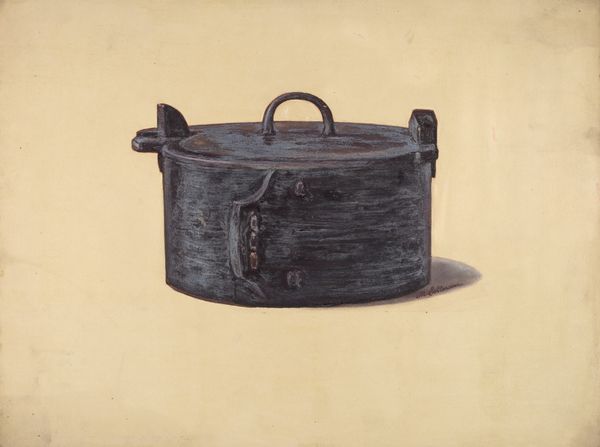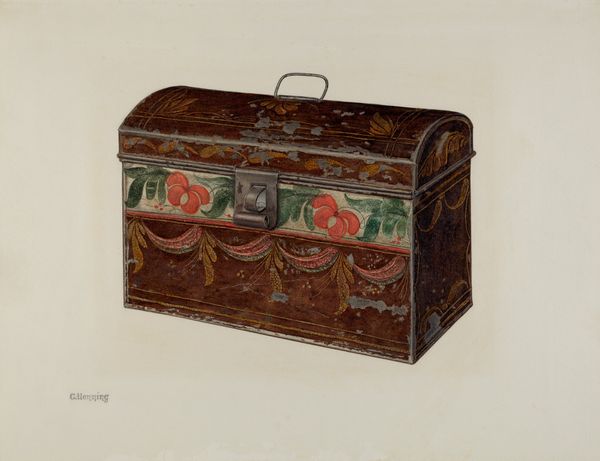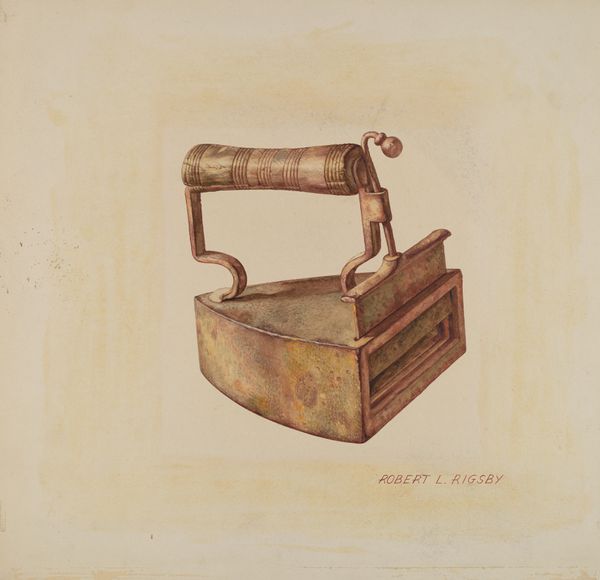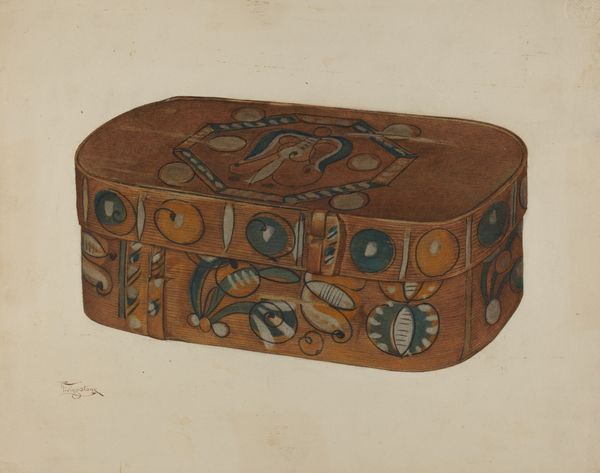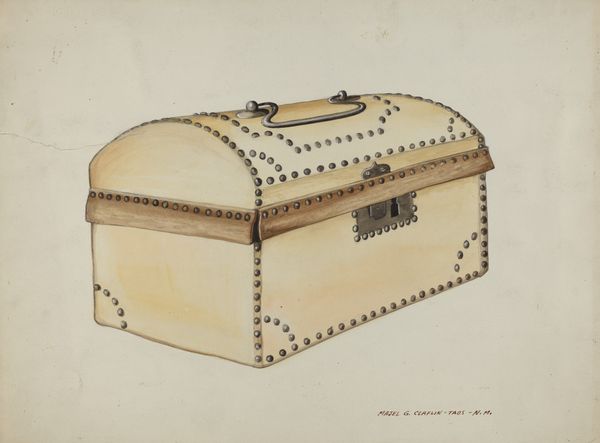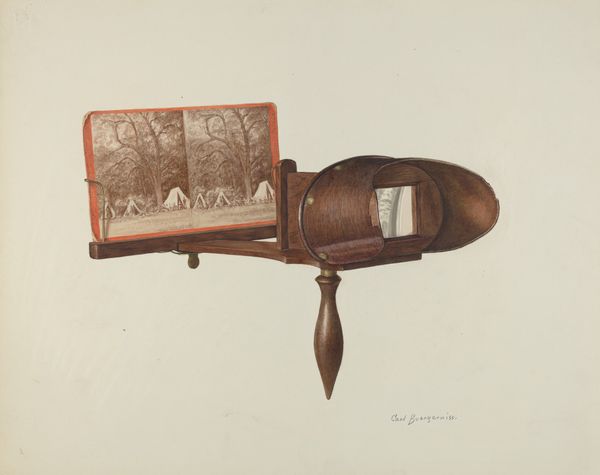
drawing, paper, watercolor
#
drawing
#
sculpture
#
charcoal drawing
#
paper
#
watercolor
#
watercolour illustration
#
watercolor
#
realism
Dimensions: overall: 35.7 x 24.6 cm (14 1/16 x 9 11/16 in.)
Copyright: National Gallery of Art: CC0 1.0
Curator: Looking at Frank McEntee's watercolor drawing "Fly Catcher," circa 1937, what strikes you first? Editor: It feels… contained. Trapped, almost. There’s something slightly melancholic about the intricate detail focused on an object designed to eliminate life, you know? A kind of violence in its purpose. Curator: Absolutely. From my perspective, understanding the socio-political context becomes crucial. The 1930s were a period of immense social upheaval, marked by both economic hardship and technological advancement. Consider the rise of mass consumerism—items like this, designed for household efficiency, also represented a changing relationship between humans and their environment. How does McEntee frame that dynamic, do you think? Editor: The meticulous realism, paradoxically, amplifies the sense of artificiality. The detailed illustrations decorating the side contrast sharply with the grim function. Are these representations of class perhaps, leisure pursuits unaware or unconcerned about consequences? Curator: That resonates. And considering realism as a stylistic choice, how does its relationship to objectivity come into play? We see what appears to be a straightforward depiction, yet there's a layer of subjective interpretation. Think about the gaze. Who is seeing the machine, who is operating it, and what position does the artist take? Editor: And doesn't this piece subtly highlight our own discomfort with intervention in nature, despite technological advancements? McEntee makes you confront an aspect of life we often choose to ignore or, better put, have someone else do it for us. Curator: Indeed. The composition and details are quite fascinating when we begin to analyze the intended audience in mind when creating it. Did McEntee mean this piece to indict? Does he instead intend for the audience to view it simply at face value, a fly trap with elaborate details. Editor: Perhaps he had many messages he wanted to convey. Ultimately this realistic rendering transforms something designed for death into a thing of morbid beauty. Its quiet visual rhetoric urges us to look and question our participation in systems that erase aspects of life to sustain others. The "Fly Catcher" is more than just an apparatus; it's an unnerving statement.
Comments
No comments
Be the first to comment and join the conversation on the ultimate creative platform.
